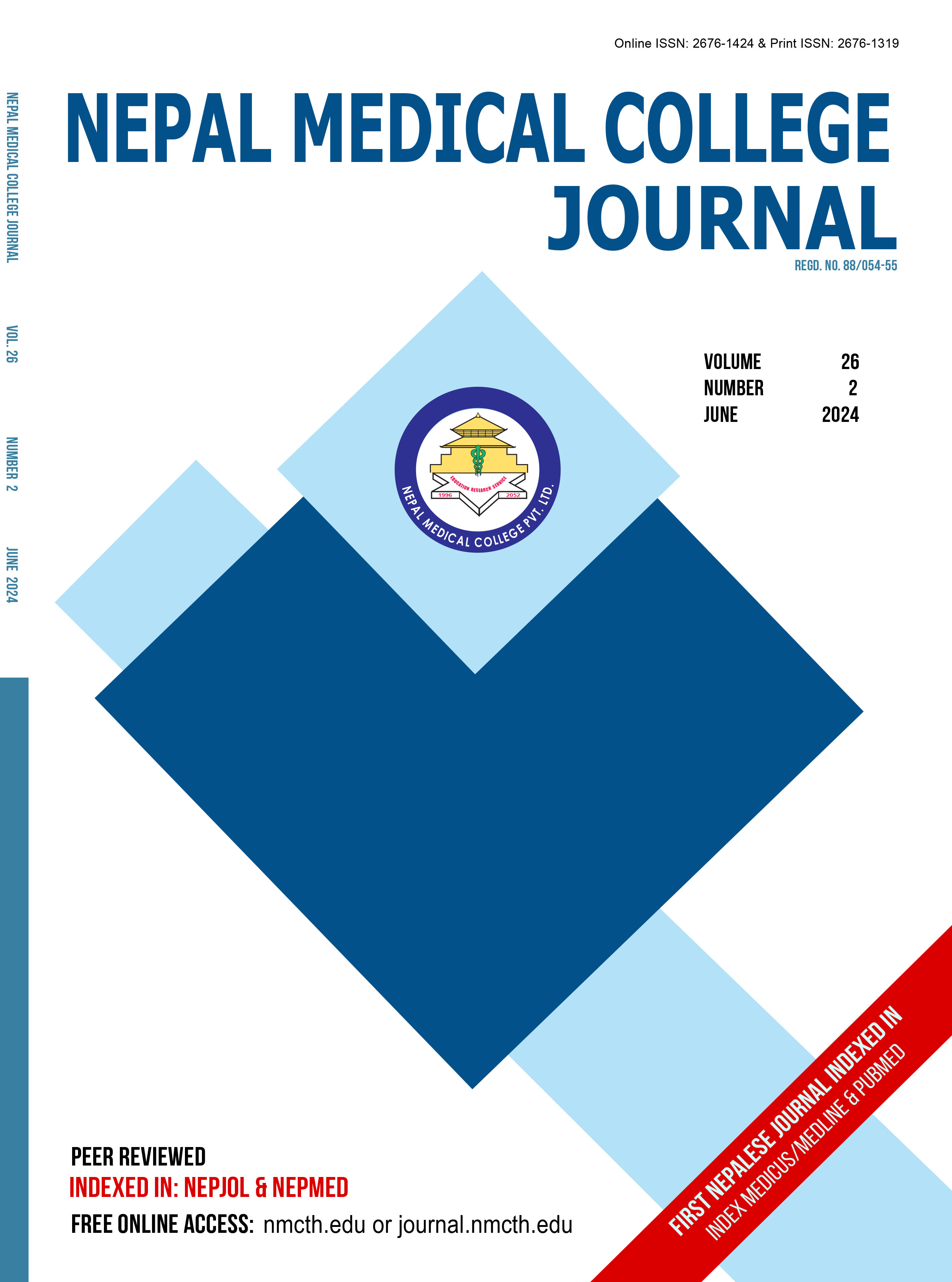Bilateral Complete Ureteral Duplication with Obstructing Stones in Both Left Ureters: A Case Report and a Review of Literature
DOI:
https://doi.org/10.3126/nmcj.v26i2.67215Keywords:
Complete ureteral duplication, hydronephrosis, kidney, stonesAbstract
Congenital anomalies like duplex renal collecting systems are rare developmental conditions. Among these anomalies, ureteral duplication is rarely observed, with partial ureteral duplication comprising a majority of cases. Bilateral ureteral complete duplication, where fully duplicated ureters drain separately into the bladder via separate orifices, is extremely rare, making it a seldom-documented anomaly in the medical literature. A case of bilateral complete ureteral duplication complicated by calculi in both the upper and lower moieties of the left kidney presented to the urology outpatient department with complaints of left flank pain for one month. His computed tomography-urogram revealed complete duplication of bilateral collecting systems with bilateral double ureters with an 8.2×5.9 mm2 sized stone in the pelvi-ureteric junction of the left upper moiety and 11.9×5.6 mm2 sized stone in the proximal ureter of left lower moiety causing hydronephrosis of both upper and lower moiety pelvicalyceal system. Calculi in both the upper and lower moieties were cleared in a single setting using a Ureteroscopic Lithotripsy. Duplex renal systems, while often asymptomatic, are linked to a higher occurrence of treatable conditions like stones and renal reflux diseases. The duplicated structure may lead to stagnant urine, causing obstructions and consequently infections. Stones that obstruct the ureter for a prolonged period can cause renal impairment and require active intervention. Currently, flexible or semirigid ureteroscopy with laser lithotripsy is the standard procedure. Even in this case, both stones were effectively managed in a single session using a standard procedure.
Downloads
Downloads
Published
How to Cite
Issue
Section
License
Copyright (c) 2024 Nepal Medical College Journal

This work is licensed under a Creative Commons Attribution 4.0 International License.
This license enables reusers to distribute, remix, adapt, and build upon the material in any medium or format, so long as attribution is given to the creator. The license allows for commercial use.




